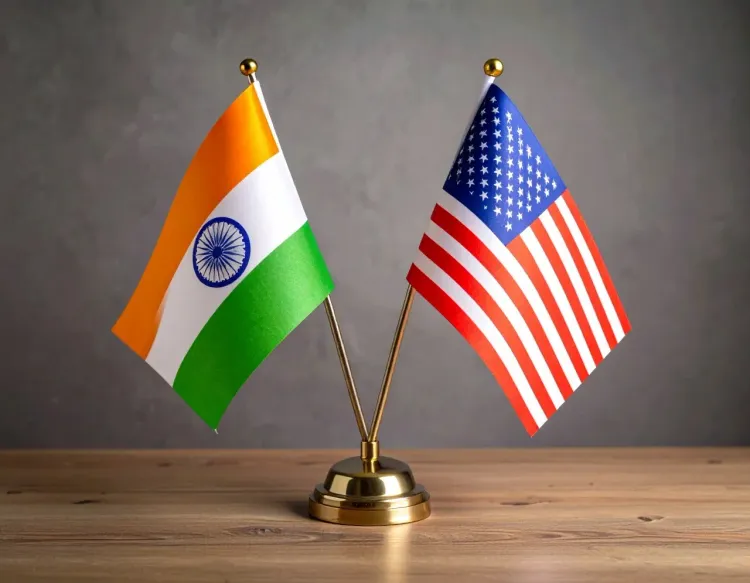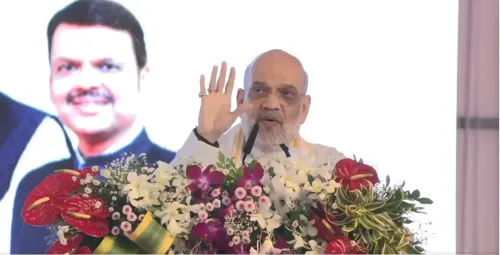Should 'Made in India' Be Revitalized as a Symbol of Unmatched Quality in Light of US Tariffs?

Synopsis
Key Takeaways
- 25% tariff imposed by the US on Indian goods.
- Opportunity to revitalize 'Made in India' as a quality benchmark.
- US accounts for 40% of India's pharma exports.
- Potential earnings drop of 2-8% for pharma companies.
- Call for tariff reduction in key sectors.
New Delhi, Aug 1 (NationPress) The recent implementation of a 25 per cent tariff on India is described as a “poor business choice”, yet the enigmatic dynamics of the global supply chain are expected to adapt and mitigate the consequences. According to a report by SBI Research, Indian enterprises should seize the opportunity to revitalize 'Made in India' as a symbol of unparalleled quality.
The report highlights that the economic indicators of the US, including GDP, inflation, and currency, face a higher likelihood of downgrades compared to those of India.
While the US remains India's leading export market (accounting for 20 per cent in FY25), India has successfully diversified its export destinations. The top ten countries now represent only 53 per cent of total exports.
Interestingly, the top 15 products exported to the US constitute 63 per cent of India's overall exports, with electronics, gems and jewelry, pharmaceuticals, along with nuclear reactors and machinery making up 49 per cent of these exports.
The previously imposed tariffs by the US on various products ranged from 0 per cent (including diamonds, smartphones, and pharmaceutical products) to a maximum of 10.8 per cent (for certain cotton bed linens). Now, all these items will incur a 25 per cent tariff.
According to the SBI report, the PLI scheme has spurred exports of smartphones and photovoltaic cells to the US, while the rationalization of the GST on cut and polished diamonds has boosted gems and jewelry exports. The demand from the US has also contributed to the increase in exports of other products.
India plays a crucial role in the global supply chain by providing affordable, high-quality essential medicines, particularly critical oncology drugs and antibiotics.
In the generic drug sector, India meets nearly 47 per cent of the US's pharmaceutical needs. If the US shifts its manufacturing and API production to other countries or domestic facilities, it will take at least 3-5 years to establish meaningful capacity. Consequently, the rise in tariffs may lead to drug shortages and increased prices for American consumers.
As the US constitutes 40 per cent of India's pharmaceutical exports, if the 25 per cent tariff persists, it could impact the earnings of pharmaceutical companies by 2-8 per cent in FY26, as revenue for many large pharma companies from the US falls within 40-50 per cent.
Moreover, the tariff may diminish competitiveness in the world's largest pharmaceutical market, exerting pressure on profit margins due to the inability to pass on costs, the report emphasizes.
The SBI report also suggests that when examining sectors with the most favored nation (MFN) tariffs imposed by India on corresponding imports from the US, the average MFN tariff is around 20 per cent. Certain sectors, including automobiles, FMCG, alcoholic beverages, tobacco, electrical equipment, textiles, and consumer durables, have tariffs of 15 per cent or more, prompting the Indian government to consider reducing tariffs in these areas.









